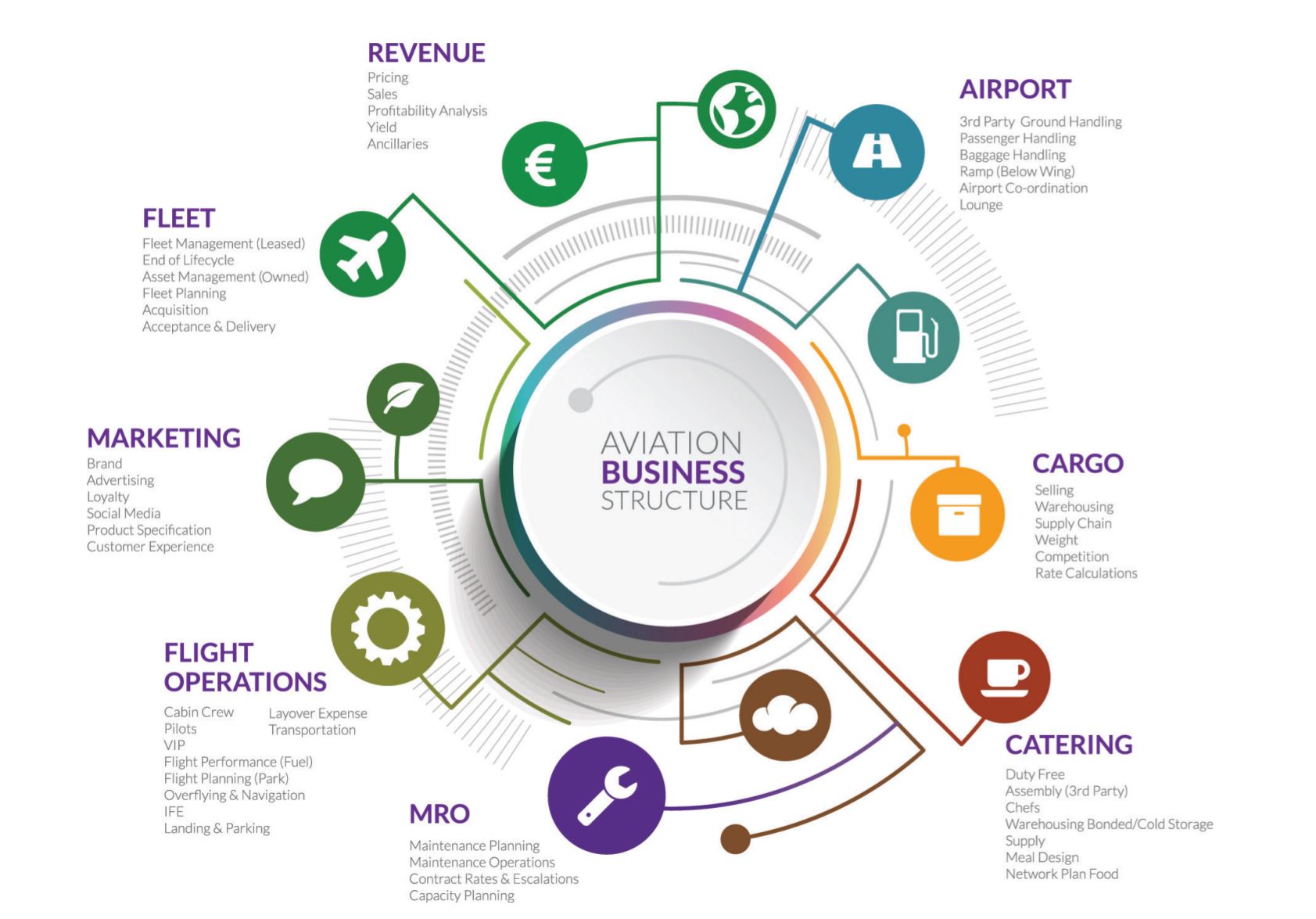The complex Aviation Industry

For more than a century, air travel has revolutionized our lives. In that time, it has evolved into one of the most competitive industries in the world, and certainly one of the most complex.
At its essence, aviation is about moving people and goods from one place to another, but such a simple description hides a service that is logistically sophisticated and multi-layered. Airlines must seamlessly co-ordinate service elements in multiple locations, while managing and maintaining their assets optimally, operating under tight time constraints, dealing with variable and fly higher than you thought possible meeting the complexity challenge sometimes unpredictable weather conditions – all within mature environmental and safety regulatory frameworks.
What’s more, consumer expectations are shifting: they demand low prices but high-quality service. Some carriers look to provide different experiences to varied classes of consumers, all within the same aircraft. In a fiercely competitive arena, airlines with best-in-class financial performance management systems are more likely to thrive and those without are more likely to fail.
Aviation combines several different commercial sectors, each with its own unique complex performance planning, reporting and compensation practices and requirements. There are many interrelated parts, changing all the time.

As the graphic shows, business units across the aviation sector have a high degree of interdependence. Change in one area impacts the management of service delivery, productivity, cost and profit in others.
Management in each unit need to be able to act in harmony with clear insight into the full impact of their decisions on the entire organization. For example, plan changes in the revenue unit can affect many, if not all, other business units.
Yield changes, or decisions to open or close routes, have implications for flight operations, airport operations, catering, fleet, and MRO. The effects can be far-reaching and potentially impact operations, profitability, and cash flow. Operational impacts include maintenance scheduling, passenger, and baggage handling, as well as the number and configuration of aircraft.
Fuel price movements and foreign currency movements impact route viability, profit contribution, and net operating profit. In MRO, decisions on engineering or Quickly assess the impact and corrective actions arising from external factors Fully understand what factors are really driving variances from plans. As the graphic shows, business units across the aviation sector have a high degree of interdependence. Change in one area impacts the management of service delivery, productivity, cost and profit in others.
Management in each unit need to be able to act in harmony with clear insight into the full impact of their decisions on the entire organization. For example, plan maintenance watch changes or severity can impact unit cost and net operating profit. Management can make better and more profitable decisions when they are able to assess their choices with full and early insight.






